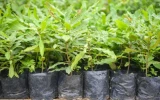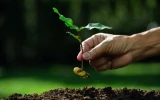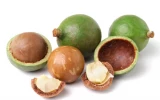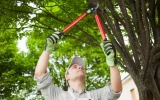Macadamia Nuts Farming 101: Ultimate Starter Guide
The most commonly cultivated types of macadamia, Macadamia integrifolia and Macadamia tetraphylla, thrive well in tropical or subtropical environments. To grow these trees, first know how to start an actual macadamia farm. This ultimate starter guide will walk you through everything you need to know.
First, know how to choose the best location for your farm. Next, identify which propagation method works for you—either grafting or seed propagation. Then, learn about the different pests and diseases of macadamia trees and how you can prevent and treat them.
When your trees have matured and produced fruits, it's about time to learn how to harvest the yield properly. As you read the rest of the article, you'll be provided with more essential tips for harvesting, processing, and marketing your macadamia nuts for maximum profitability.
To get into more specific details on the process of starting a macadamia nut farm from scratch, check out this article.
Summary
- When choosing from various propagation methods, such as seed, graft, cuttings, and air layering, pay attention to factors like soil acidity, spacing between trees, and irrigation.
- Caring for macadamia trees involves providing the right nutrition through balanced fertilization, proper pruning and training to maintain tree structure and health, and protecting the trees from pests and diseases through regular monitoring and appropriate control measures.
- When selecting a site for macadamia nut farming, keep in mind that they only thrive in well-draining soil with a pH range of 5.0 to 6.5, require full sun for at least 6–8 hours of direct sunlight per day, and are sensitive to frost and freeze.
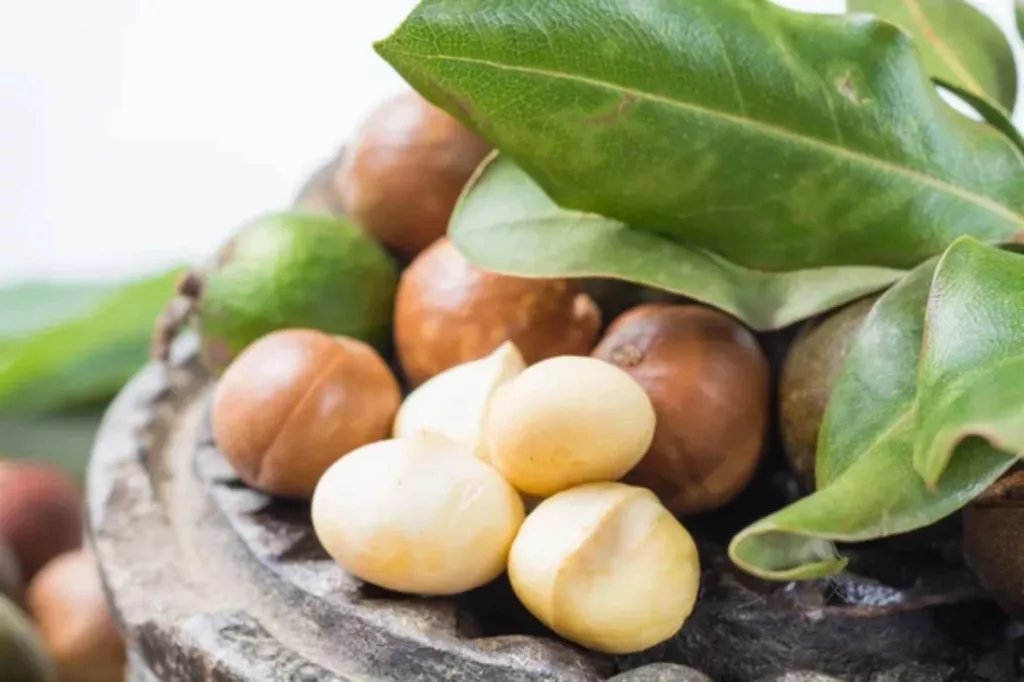
On this page:
Choosing the Best Spot for Your Macadamia Trees
Here are some factors to consider when selecting and preparing your site for a macadamia nut farm:
Macadamia soil requirements
Macadamia trees prefer well-draining soil with a pH range of 5.0 to 6.5. Before planting, test the soil to determine its pH level. If the soil pH is too high or too low, amend it with the appropriate materials to bring it within the optimal range.
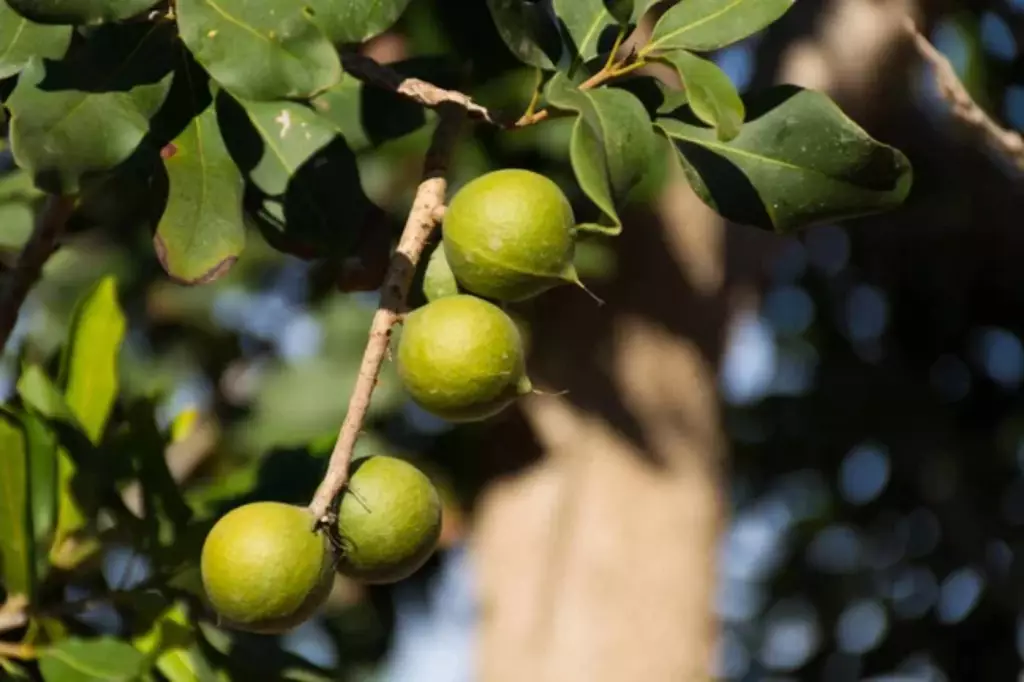
Additionally, macadamia trees prefer soil with good drainage. If the soil has poor drainage, you might want to consider planting on a raised bed or mound to improve drainage.
Light and temperature needs of macadamia trees
Macadamia trees thrive in full sun, so you may want to choose a site that receives at least 6–8 hours of direct sunlight per day. Additionally, consider the temperature range of your location.
Macadamia trees are sensitive to frost and freeze, so try to avoid planting in areas that experience prolonged periods of freezing temperatures.
Water and humidity levels required for macadamia planting
Macadamia trees require consistent moisture, but they do not tolerate waterlogged soil. Try to choose a site with good access to water, and ensure that the soil has adequate drainage to prevent waterlogging.
Additionally, consider the humidity levels in your location. Macadamia trees prefer areas with moderate humidity levels, so avoid planting in areas with excessively high or low humidity levels.
Start Planting Your Macadamia Trees
If you're planning to start a macadamia nut farm, planting macadamia trees is the first step you need to take. Here are some tips to help you get started:
Propagating macadamia trees
There are several ways to propagate macadamia trees, including seed, graft, cuttings, and air layering. The most common method is to grow macadamia trees from grafted plants, as this ensures the best quality and yield.
However, if you want to save money, you can also grow macadamia trees from seeds. Just keep in mind that it takes longer for the trees to mature and produce nuts. A more detailed comparison of the different propagation methods for macadamia can be found in this article.
Planting techniques for successful macadamia cultivation
Below are some tips to help you plant your macadamia trees successfully:
-
Amend your soil if necessary: Macadamia trees prefer well-draining, slightly acidic to neutral soil. Before planting, test the acidity of your soil and amend it if necessary to achieve the desired pH of 5.5–6.5.
-
Keep in mind the spacing between trees: Macadamia trees need plenty of space to grow. Plant them at least 25–30 feet apart to allow for adequate sunlight and airflow.
-
Set up proper irrigation: Macadamia trees require regular watering, especially during the first few years of growth. Make sure to irrigate them deeply and frequently to keep the soil moist.
Before planting your macadamia trees, it's a good idea to start them in a nursery as saplings. This will give them a better chance of survival and growth.
When planting, make sure to dig a hole that's deep enough to accommodate the root ball of the sapling. Gently place the sapling in the hole and cover it with soil, making sure not to bury the graft union. Water the sapling thoroughly to help it settle into the soil.
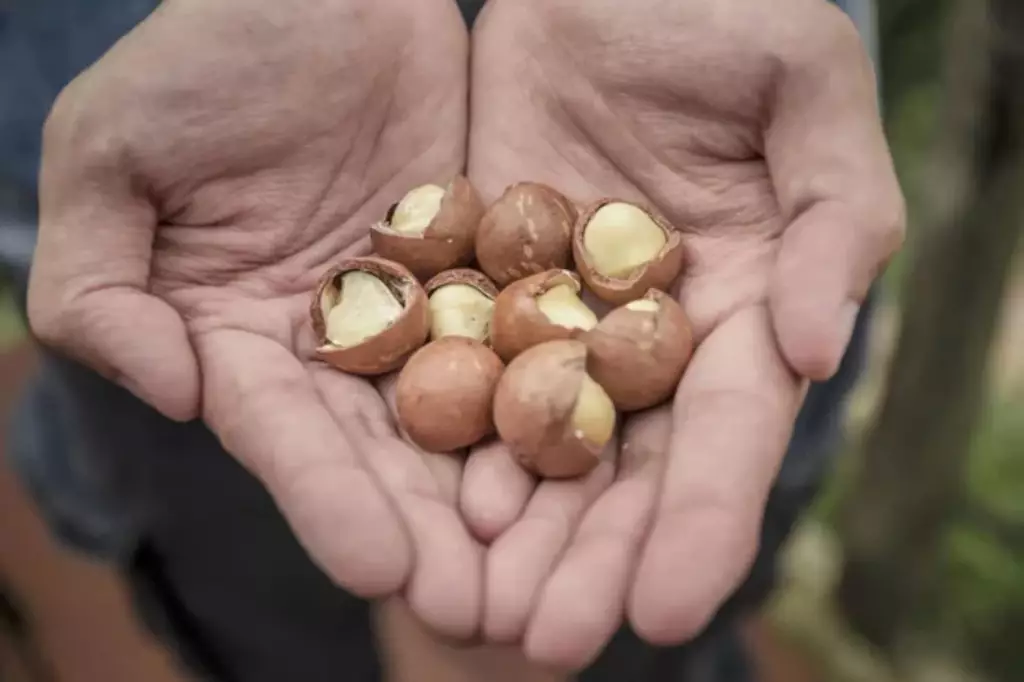
Caring for Your Macadamia Trees
In this section, we will discuss the essential aspects of Macadamia tree care, including nutrition and fertilization, pruning and training, and protection from pests and diseases.
How to properly nourish your macadamia trees
Macadamia trees require a balanced diet of nutrients to grow and produce healthy nuts. The three essential macronutrients that macadamia trees need are nitrogen, phosphorus, and potassium.
Nitrogen promotes foliage growth, while phosphorus promotes root development and flower production. Potassium helps in overall plant growth and water regulation.
To provide macadamia trees with the right nutrition, you will need to apply a balanced fertilizer that contains equal parts of nitrogen, phosphorus, and potassium. Fertilize the trees once a year, preferably in early spring. You can also add compost or organic matter to the soil to improve soil fertility.
How to properly prune and train macadamia trees for optimized growth
Pruning is essential in shaping and maintaining the tree's structure, promoting better light penetration and air circulation, and removing dead or diseased wood. Prune the trees during the dormant season, preferably in late winter or early spring.
When pruning, keep in mind the tree's maturity and shape. Young trees require more pruning to establish a strong framework, while mature trees require less pruning to maintain their shape.
Training involves shaping the tree's structure to promote better light penetration and air circulation, which helps in reducing pest and disease pressure. Train the trees to have a central leader, and remove any competing branches that interfere with the tree's growth.
How to protect your trees from pests and diseases
Macadamia trees are susceptible to pests and diseases, such as rodents, fungi, macadamia nut borer, and anthracnose. To protect your trees, you need to keep the orchard clean and free of debris, which can harbor pests and diseases.
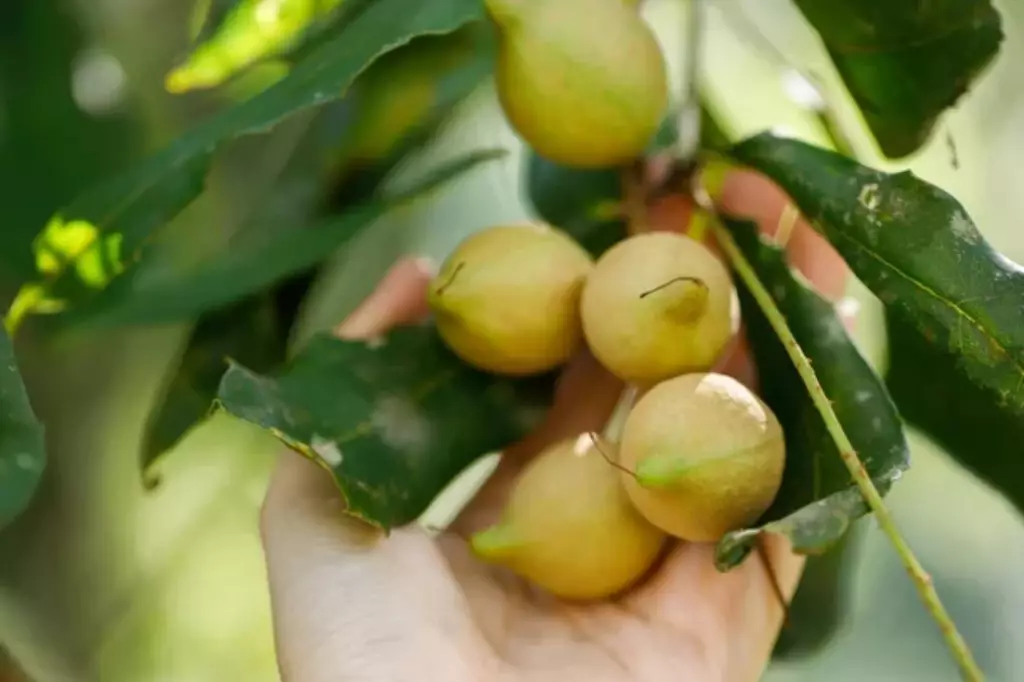
Use pest and disease-resistant cultivars, if available, and monitor the trees regularly for signs of damage. Apply appropriate pest and disease control measures, such as insecticides, fungicides, and rodenticides, if necessary.
Mulching around the base of the tree can also help in reducing pest and disease pressure. Use organic mulch, such as wood chips or straw, to retain soil moisture and improve soil fertility.
Maximizing Your Harvest and Post-Harvest Success
In this section, we will guide you through the harvesting process, processing, and storage of your macadamia crop:
The ideal time to harvest macadamia nuts
Macadamia nuts are ready for harvest when the husks start to split open, exposing the ripe nuts. The fruiting season for macadamia trees varies depending on the cultivar and location, but it typically takes 7 years before their first produce.
However, the harvest season typically runs from late fall to spring. During the wet weather, you should collect your macadamia nuts every two to four weeks.
On the other hand, during dry weather, you can collect your nuts less often, every one to two months. Wet weather is more likely to cause mold, germination, and rat or pig damage to your crop.
When harvesting, you might want to avoid damaging the nuts. You can use a long pole with a hook at the end to shake the tree branches gently. The ripe nuts will fall to the ground, where you can collect them.
You can also use a mechanical harvester if you have a large crop. However, you need to be careful to avoid over-harvesting, which can damage the tree and reduce the yield of the next crop.

Processing macadamia nuts
After harvesting your macadamia nuts, you need to remove the husks and prepare them for storage. You can remove the husks by leaving them in the sun for a few days until they dry and crack open.
Alternatively, you can use a mechanical husker to remove the husks. After removing the husks, you need to wash the nuts and dry them to a moisture content of around 10%.
You can process your macadamia nuts into different products such as roasted nuts, butter, and oil. To roast your nuts, you need to preheat your oven to 150°C and roast the nuts for 12-15 minutes. You can also deep-fry the kernels and grade them before packing.
How to handle and store macadamia nuts properly
Macadamia nuts are susceptible to moisture, heat, and pests. Therefore, you need to store them in a cool, dry place, free from odors.
You can store your nuts in airtight containers, such as jars or plastic bags. You can also store them in the freezer to extend their shelf life.
When handling your macadamia nuts, you need to avoid exposing them to moisture, heat, and pests. You should also avoid overhandling them, as this can cause mechanical damage and reduce their quality.
Unlocking the Potential of Macadamia Trees in Business
This section will cover two important commercial considerations for macadamia nuts farming: market and economics and sustainable practices.
Research the market and understand the economics of the macadamia industry
Macadamia nuts are primarily grown in Australia and Hawaii. They are also cultivated in other regions, including the United States, particularly in California and Florida.
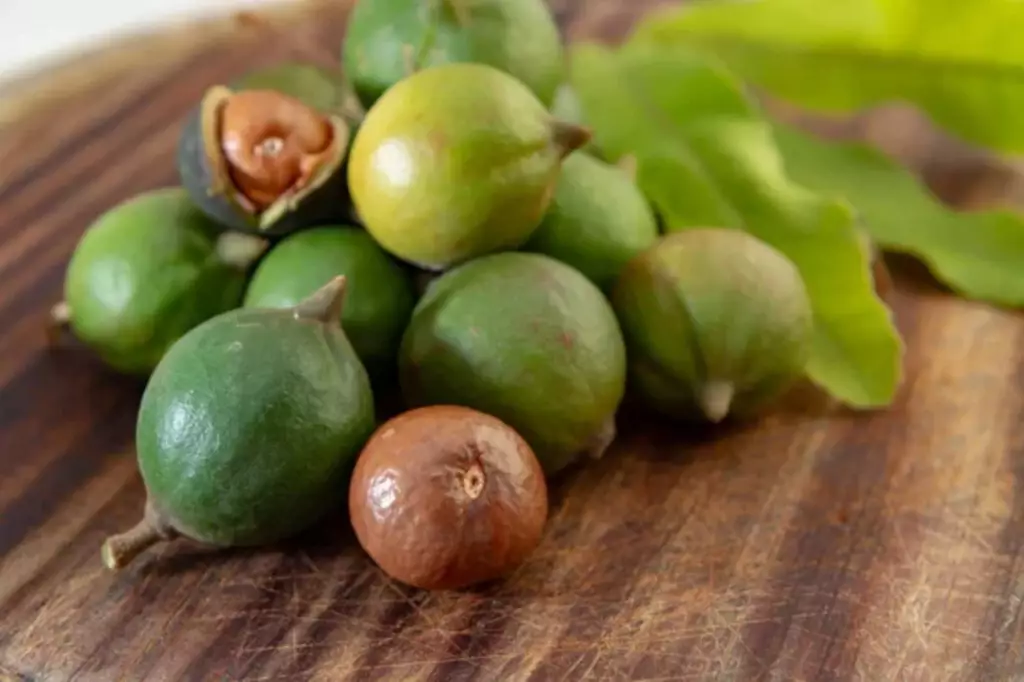
In Australia, they are sometimes referred to as "Queensland Nut" due to their cultivation in Queensland.
When it comes to the market for macadamia nuts, there is a growing demand for the product. Macadamia nuts can be sold raw or processed into various products such as candy, snacks, and food ingredients.
However, you need to keep in mind that starting a macadamia nut farm can be expensive due to the initial investment required for land, equipment, and labor. You need to create a business plan and conduct a thorough cost analysis before starting this business.
